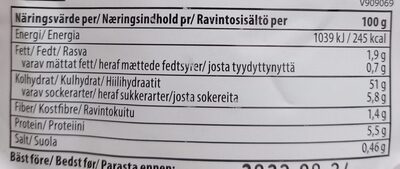Asian Steam Buns - Santa Maria - 200 g
This product page is not complete. You can help to complete it by editing it and adding more data from the photos we have, or by taking more photos using the app for Android or iPhone/iPad. Thank you!
×
Streckkod: 7311312007513 (EAN / EAN-13)
Kvantitet: 200 g
Varumärken: Santa Maria
Kategorier: Växtbaserad mat och dryck, Växtbaserad mat, Spannmål och Potatisar, Bröd
Etiketter, certifieringar, utmärkelser:
en:Green Dot
Länder där såld: Sverige










